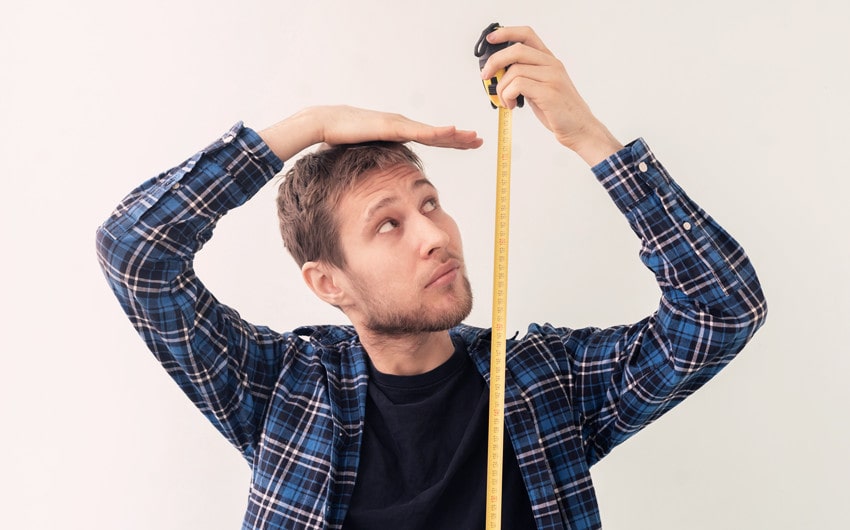15 Clear Signs That You’re Still Growing Taller as a Male
Wondering if you’re still gaining height? For teenage boys and young men, figuring out whether you’re still growing can feel confusing. Growth doesn’t happen overnight, and it often shows up in subtle ways—especially after puberty kicks in. While genetics play the biggest role in how tall you’ll become, your body often sends out clues when it’s still in growth mode.
Here are 15 signs that suggest you might still be growing taller as a male.
1. You Haven’t Reached Full Beard Growth Yet
Facial hair development is one of the last stages of puberty in males. If your beard is still patchy or hasn’t thickened, chances are you haven’t completed your growth phase—and your bones might still be stretching.
2. You’re Still in Your Teens (Especially 13–18)
Most males experience their major growth spurts between ages 12 and 18. If you’re still in your teens, your growth plates are likely still open, which means there’s still room to grow—literally.
3. You Experience Growing Pains
Dull aches in your legs, knees, or arms—especially at night—can be a sign of your bones lengthening. These so-called “growing pains” are common during growth spurts and tend to fade as growth slows down.
4. Your Hands and Feet Are Still Getting Bigger
Notice your shoe size increasing or rings feeling tighter? Your extremities often grow before your height catches up. Bigger hands and feet can signal that your bones are still extending.
5. You’ve Gained Height in the Last 6–12 Months
If you’ve measured yourself recently and noticed even a small increase—like half an inch or more—you’re likely still growing. It might be slow, but any upward change is a sign of progress.
6. You Sleep a Lot and Still Feel Tired
Sleep is crucial for growth, especially during puberty. If you’re sleeping 9+ hours a night and still feel groggy, your body could be using that rest time to support bone and muscle development.
7. You Have a Younger-Looking Face
If people say you still “look like a kid” or have a baby face, you might still be in the middle of your physical maturation. Your facial bones and jawline often sharpen as you finish growing.
8. Your Voice Is Still Deepening
Vocal changes happen as your larynx grows. If your voice still cracks or hasn’t settled into its adult tone, your body could still be adjusting hormonally—and that can include continued height development.
9. You’ve Had a Late Growth Spurt
Some guys don’t hit their big growth spurt until 16, 17, or even later. If you were a “late bloomer,” your growth timeline may be shifted a year or two beyond the average, meaning you might continue growing into your early twenties.
10. You Eat Constantly (Especially Protein and Carbs)
If you’re always hungry and gravitate toward high-calorie foods, your metabolism may be working overtime to support growth. Teen males going through growth spurts often report ravenous appetites—especially for meat, dairy, and grains.
11. Your Knees or Ankles Ache After Activity
Stress on developing joints is common in growing teens. If you experience soreness in your knees, ankles, or hips after sports or walking, it could be from growing bones adjusting to new lengths.
12. You Notice Changes in Posture or Limb Length
Are your pants suddenly too short? Do you look lankier in photos? As growth happens, your limbs may elongate first, followed by your torso. This shift can make you appear awkward or clumsy for a time.
13. You Haven’t Hit 21 Yet
While most males stop growing between 16 and 18, some continue until age 21 or even 22. If you’re still under 21 and show other signs on this list, there’s a solid chance your height isn’t set in stone yet.
14. Your Parents or Siblings Grew Late
Growth patterns often run in families. If your dad or older brother had a late growth spurt, you might too. Take a look at family history—it often predicts your growth timeline better than charts do.
15. Your Doctor Says Your Growth Plates Are Still Open
This is the most accurate sign. An X-ray of your hand or wrist can show if your growth plates (epiphyseal plates) are still open. If they are, it means you still have the potential to grow taller.
Bonus Tip: How to Support Growth Naturally
- Eat a balanced diet: Include protein, calcium, zinc, and vitamin D.
- Get enough sleep: Aim for 8–10 hours nightly.
- Exercise regularly: Activities like basketball, swimming, or stretching can support posture and spine health.
- Avoid stunting habits: Smoking, alcohol, or poor diet can negatively affect growth hormones.
Final Thoughts
Growing taller isn’t something you can see day by day—but if you recognize several of these signs in yourself, your body might still be adding inches. Growth is influenced by genetics, lifestyle, and timing. While you can’t change your DNA, you can definitely support your potential by eating well, staying active, and giving your body the rest it needs.
And remember: height is just one piece of who you are. Whether you’re still growing or have already reached your peak, confidence, posture, and health matter even more than a few extra inches.






